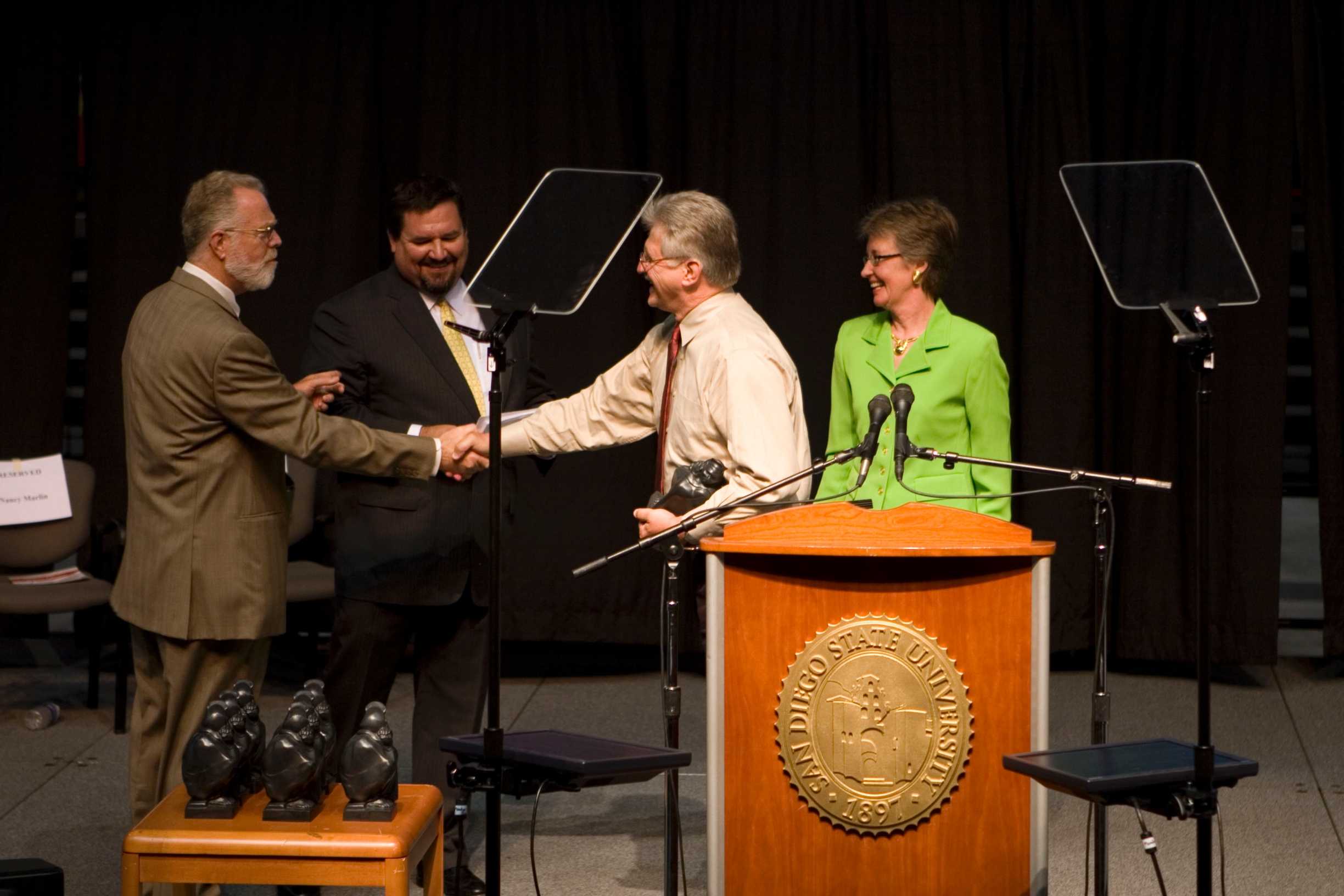 File Photo
File PhotoRecent events have put diversity in the spotlight in San Diego, giving universities a chance to show its true colors.
During San Diego State’s University Senate meeting on March 2, the Committee on Diversity, Equity and Outreach brought it to the senate’s attention that there are only a few level four administrators from minority groups.
According to Anne Donadey, chair of the DEO committee, from 2006 to 2009, the university has had between two and four level four administrative positions filled by people from minority groups. In the history of the university, there has only been one woman of color to fill a level four administration position.
There are 32 level four administrative positions at SDSU, which is the highest level in administration. Currently, there are three vacant level four administrative positions at SDSU: vice president for Faculty Affairs, dean of the library and information access and the dean of Imperial Valley Campus. The positions are expected to be filled by the end of the semester. With the deadline quickly approaching, SDSU is faced with the task of making sure applicants are of diverse backgrounds.
Director of Diversity Aaron Bruce said a diverse background is not defined by an individual’s ethnicity, but by their values. Bruce said he would like to have candidates for these positions share certain values SDSU has, namely a commitment to diversity and social justice.
“Giving preference to an individual is something we cannot do,” Bruce said. “However, you would like to find a diverse pool of candidates in order to find the best fit.”
California’s voters previously banned the use of affirmative action by successfully passing Proposition 209 in 1996. According to the proposition, any discrimination or preferential treatment by the state or other public entities is prohibited.
Donadey said rewording the application to let applicants know they must be able to demonstrate an ability to work well with different types of people is one way to diversify the applicant pool. Another measure is advertising in journals of higher education, which are read by various minority groups. Donadey said it is important to stress the need for multicultural competency in these ads.
Bruce said because of Proposition 209, assuring a specific type of person gets the job is not possible, which is why there is an importance placed on attracting the right people to apply for the job.
“Ultimately, you’d like to pull from a pool of the highest quality of people,” Bruce said.
Both Bruce and Donadey said they are looking for applicants who can demonstrate cultural competency. They define this as a willingness and an ability to work with people from other cultures.
“People cannot lie on this stuff. If they are clueless, it will show in their teaching, research or service.” Donadey said.
Because of her position, Donadey oversees some of the candidate selection process.
“I have seen some really interesting responses about cultural competency,” Donadey said. “When I ask a question about a candidate’s vision for enhancing diversity during a campus visit, people who are not culturally competent think I am calling them a racist and then they respond in an embarrassing way.”
Donadey said having few minorities in high-level positions is not uncommon for any American institution.
“It’s a general trend of discrimination practiced in the nation,” Donadey said. “(The) higher up you get in the hierarchy, the less diverse the decision makers are.”
Donadey said before anyone can come up with a solution to this problem, they must first be made aware of it.
Donadey said she hopes having a diverse faculty will encourage more minorities to apply for jobs in the future and reverse the trend of having few minorities involved at the top level.
Bruce said recent events did not prompt the university to take these measures.
“We’ve been doing quite a bit of diversity work before the events at UCSD happened and will continue to do more in the future,” Bruce said. “When measuring the success of diversity, you can always do more.”
The DEO committee created a new Faculty Diversity Award which will be presented at the May 12 Diversity Awards ceremony.









